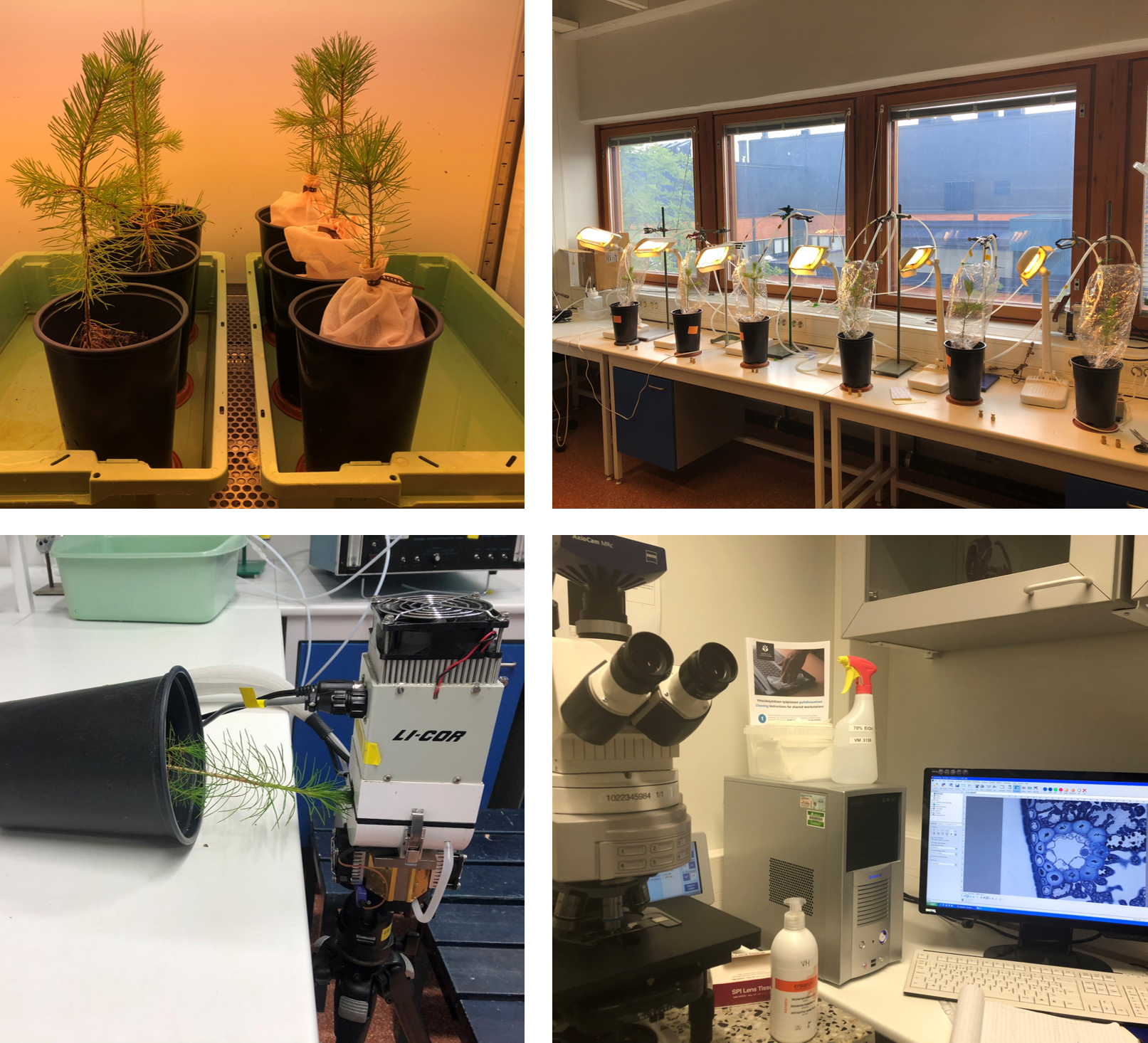
Conifercom
Funders

Plant-plant communication in conifers: above- and below-ground resource allocation under abiotic stress (Conifercom)
Leaders
Plants have been shown to interact with their neighbours using chemicals released both above- and belowground. These interactions are often seen when a plant damaged by herbivores releases chemicals that are detected by an undamaged neighbour. Although volatile-mediated plant-plant interactions were first observed in broadleaved tree species, conifers have been neglected as a study system. However, our recent results have shown that Scots pine increases photosynthesis in response to chemical cues, thus representing an excellent and novel study system. Abiotic factors can alter plant-plant interactions via direct effects on plants, or by changing the properties of the air or soil through which cues move. Plants may respond to these stresses by adjusting their investment to above- and belowground interactions. In this project, we will investigate concurrent plant-plant interactions above- and belowground and the allocation of resources in response to drought and ozone pollution.
Cooperation
-
University of Reading
-
German Centre for Integrative Biodiversity Research (iDiv) Halle-Jena-Leipzig
-
Nanjing University of Information Science & Technology
-
University of California Davis

Plant-plant interaction experiments with Scots pine saplings


